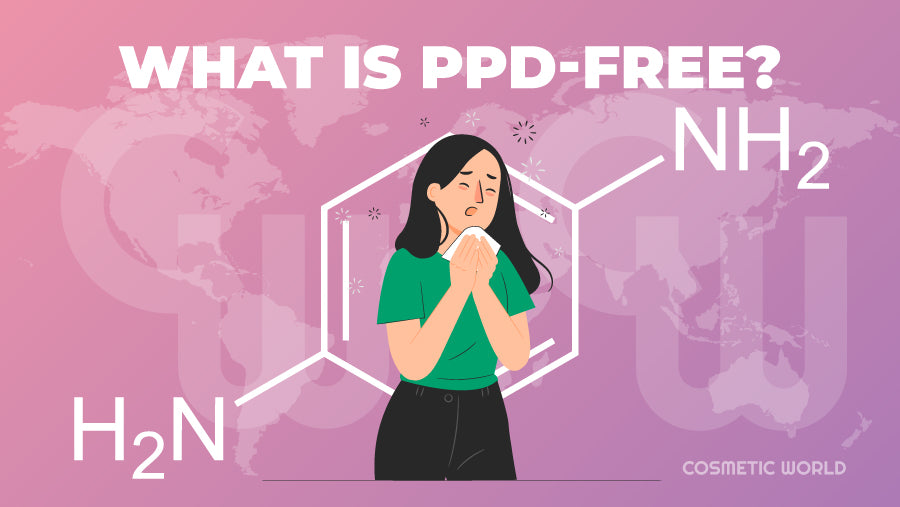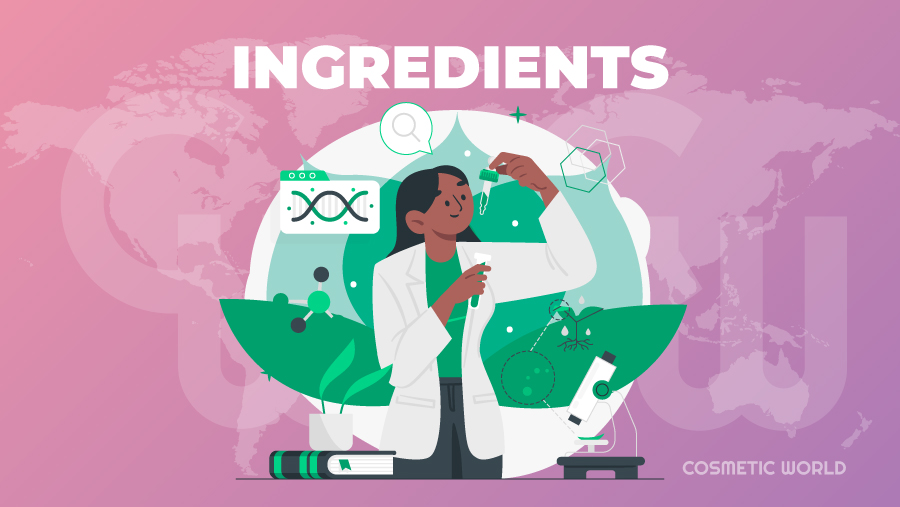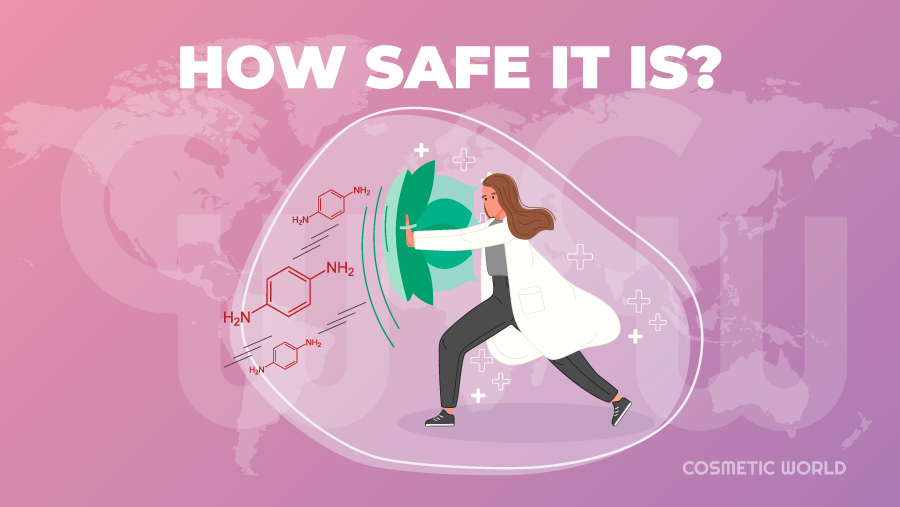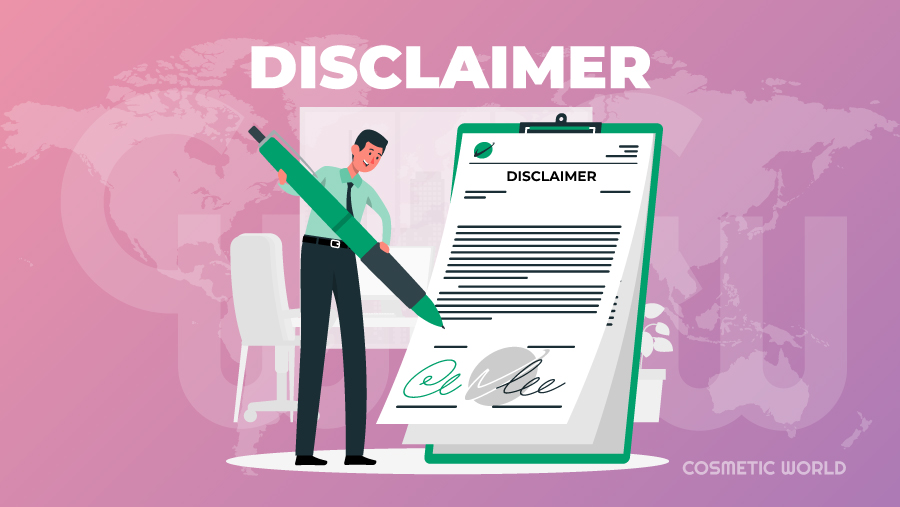Hair dyes, an integral part of many people's beauty routines, have come under increased scrutiny due to concerns about their safety. One chemical of particular concern is para-phenylenediamine, or PPD. This ingredient, found in many hair dyes, is known for causing allergic reactions in some people. The symptoms range from itchy scalp to severe skin irritations and even difficulty breathing. However, as PPD is efficient in creating a broad spectrum of deep, natural-looking hair colors, it continues to be widely used in many conventional hair dye formulas.
Table of Contents
- What is a PPD-Free Hair Dye?
- Common allergic reactions to PPD
- What are the Benefits of PPD-Free Hair Dye
- Why Trust Cosmetic World?
- What alternatives to PPD?
- How Freelux is PPD-free and still gets you that perfect shade you want?
- Is Freelux a permanent hair dye?
- What are the ingredients of Freelux?
- Ingredient
- Benefits
- How safe is the PPD-free hair color?
- Disclaimer:
This article will delve deep into the world of hair dyes, specifically focusing on PPD-free hair dyes. You'll gain an understanding of what PPD-free hair dye is, the benefits it offers, and how it works. You'll also learn about the alternative ingredients to PPD. Moreover, I'll share with you how they achieve the same vibrant results, and the importance of choosing the right products for your hair. We'll explore one specific brand, Freelux by Tocco Magico, its PPD-free formulation, and its safety profile. Whether you're a seasoned hair stylist or someone looking for healthier hair dye options, this article has valuable information to help you make informed decisions about your hair care.
What is a PPD-Free Hair Dye?

PPD-Free hair dye is a type of hair color that does not contain the chemical compound Para-Phenylenediamine (PPD). PPD is an ingredient traditionally used in many hair dyes, particularly dark hair colors. It helps the color penetrate the hair shaft and become permanent. However, PPD has been associated with allergic reactions and skin sensitivity in some individuals. This has led to a demand for PPD-free hair dyes.
👩💻📝 Author's note: If you remember my article on "Best safe hair dyes for allergy sufferers", you would know my story and what I'm talking about. It wasn't a pleasant moment.
PPD-free hair dye uses alternative ingredients to achieve the desired hair color. These alternatives are often natural or derived from natural sources and are less likely to cause allergic reactions or irritation. They still provide a vibrant color that adheres to the hair shaft, ensuring a long-lasting effect.
The move to PPD-free hair dyes is part of a broader shift towards safer, less toxic beauty products. By using PPD-free hair dyes, individuals with sensitive scalp, PPD allergy, or anyone seeking a safer hair dyeing option can enjoy a change in hair color without putting their health at risk. These products offer a completely safe and effective solution to cover gray hair and enhance natural hair color. Moreover, you achieve that without the risks associated with traditional hair dye formulas.
Common allergic reactions to PPD

PPD, or para-phenylenediamine, is a common ingredient in hair dyes that's known for triggering allergic reactions in some people. Reactions to PPD can range from mild to severe and include the following symptoms:
-
Itchy scalp 🙆♀️: This is one of the most common reactions and may begin a few hours after using the hair dye.
-
Skin redness and irritation 😣: PPD can cause skin irritations around the hairline, on the scalp, and on the ears.
-
Swelling 😫: In severe cases, PPD can cause swelling of the face, eyes, or ears.
-
Rashes or hives 🔴😣: Raised, red, itchy bumps may appear on the skin.
-
Dermatitis 🩹🧴: Contact dermatitis is a common reaction to PPD and involves inflammation of the skin, leading to redness, swelling, and blisters.
-
Respiratory problems 😷💨: In rare instances, people may experience difficulty breathing due to an allergic reaction to PPD.
-
Anaphylactic shock 😱💔: This is a very rare but severe reaction that involves multiple systems in the body and can be life-threatening. It usually requires immediate medical attention.
It's important to note that not everyone is allergic to PPD, but for those who are, the reactions can be very uncomfortable and sometimes serious. That's why experts always advise performing a patch test before applying a new hair dye. They recommend this even for products you've used before, as allergies can develop over time.
And here's a friendly reminder of what can happen if you don't listen to Monika...
What are the Benefits of PPD-Free Hair Dye

PPD-Free hair dyes offer several significant benefits, transforming hair color while prioritizing safety and health:
-
Safe for Sensitive Scalp: PPD-free hair dyes are an excellent choice for those with a sensitive scalp. Many people experience itchiness, redness, or discomfort with conventional hair dyes due to harsh chemicals. PPD-free formulas mitigate these issues, offering a hypoallergenic hair dye alternative.
-
Reduced Risk of Allergic Reactions: PPD is a common culprit for hair dye allergies, with symptoms ranging from minor skin irritations to severe reactions, such as difficulty breathing. By using PPD-free hair dyes, you substantially reduce the risk of an allergic reaction.
-
Maintains Hair Health: Traditional hair dyes can damage the hair shaft over time, leading to dull, lifeless locks. PPD-free hair dyes, especially those that incorporate nourishing natural ingredients like essential oils and vitamins, help maintain hair's health and integrity.
-
Vibrant, Long-lasting Color: You don't have to compromise on performance with PPD-free hair dyes. Products like Freelux offer a vibrant color payoff and permanent hair color transformation that can last up to eight weeks, on par with traditional hair dyes.
-
Environmentally Friendly: PPD-free hair dyes often include eco-certified and organic ingredients, promoting sustainable practices in the beauty industry. This means you can feel good about not only how your hair looks but also the impact you're making on the environment.
-
Comprehensive Coverage: Whether you're aiming to cover gray hair or change your natural hair color entirely, PPD-free hair dyes offer comprehensive coverage. They provide a range of shades to choose from, ensuring you get the perfect match.
Why Trust Cosmetic World?

In the realm of professional beauty, consistent delivery of quality, safety, and transparency earns trust, it's not simply given. At Cosmetic World, we've strived to uphold these values throughout our 47-year journey in the hair care industry. This has made us the go-to supplier of professional beauty supplies in Toronto's film, theatrical, and fashion industries. Top publications have recognized our story of commitment and unwavering dedication to excellence. That includes The Globe and Mail, Toronto Star, Flare, and Now magazines. But why should you trust us specifically for your hair color needs? Let's shed light on some compelling reasons.
List with reasons:
-
Experience: First and foremost, it's me, Monika.. Yes... I know it sounds a little bit (or maybe not that little) confident but come on guys... I've been with Cosmetic World for more than a year. And I've been in the cosmetic industry for almost 9 years. This journey has bestowed upon me an understanding of the nuances of hair care, the importance of the ingredients used, and the emerging trends in hair color. Moreover, this allowed me to guide you through all kinds of hair problems.
-
Knowledgeable Staff: Our team at Cosmetic World is more than just employees; they are passionate professionals who live and breathe hair care. With their knowledge and understanding, they assist our customers in making well-informed choices that resonate with their unique needs.
-
Trustworthy manufacturer: The reputation of Tocco Magico further bolsters our trust quotient. An established name in hair care, Tocco Magico has an 80-year legacy in the hair care industry. Their commitment to innovation, quality, and safety is well-documented and revered globally. Their Freelux line is no exception; it offers the same premium quality that they're known for, but with a modern, eco-friendly twist.
-
Quality Assurance: We work tirelessly to provide our customers with products that not only deliver desired results but also prioritize their well-being. We believe in the power of PPD-free, propylene glycol-free, cruelty-free, and paraben-free formulations that are kind to both hair and skin.
When you choose Cosmetic World for your hair color needs, you're not just opting for a product; you're joining a community that cares about your hair's health, beauty, and longevity.
What alternatives to PPD?

For those suffering from PPD allergy or simply preferring a more natural approach to hair dye, the market has seen a surge of alternatives that prove to be just as effective in achieving a lasting hair color. The PPD alternatives can be broadly classified into two categories: synthetic alternatives and natural alternatives.
Synthetic Alternatives 🧪💇♀️🎨🔄
Chemically developed ingredients that serve the same purpose as PPD but carry a lower risk of allergic reactions exist. One such alternative is Toluene-2,5-diamine sulfate (TD). Although it's a synthetic compound, it is significantly less likely to cause severe reactions compared to PPD. Other alternatives include para-toluenediamine (PTD) or hydroxyethyl-p-phenylenediamine sulfate (HEP).
Natural Alternatives 🌿💇♀️🎨🔄
Some hair dyes use natural ingredients like henna (natural hair dye) and indigo to color the hair. Henna, known for its ability to create a rich, medium brown or dark brown hue. It's a completely safe and all-natural alternative. It coats the hair shafts with its natural depth of color, providing a totally natural, permanent hair color without the use of any toxic chemicals.
What Freelux uses instead of PPD?

In the case of Freelux by Tocco Magico, the brand chose a revolutionary path by creating a PPD-free hair color range using a unique blend of natural ingredients and eco-certified organic ingredients. This combo penetrates the hair shaft, ensuring the color lasts up to eight weeks, and offers a range of vibrant hair colors. Freelux doesn't compromise on color vibrancy or longevity despite its PPD-free formulation.
Moreover, the addition of Tsubaki Oil, rich in Vitamin E and essential oils, provides further nourishment, ensuring colored hair stays healthy, glossy, and vibrant. The fact that Freelux is also ammonia-free, resorcinol-free, and petroleum-free makes it a top choice among safe hair dyes.
How Freelux is PPD-free and still gets you that perfect shade you want?

Freelux uses a revolutionary PPD-free method to deliver vibrant, long-lasting hair color. The formula, composed of eco-certified organic ingredients like Tsubaki Oil, Olus Oil, Rosa Seed Oil, and Rice Oil, nourishes the hair and ensures color longevity of up to eight weeks. The formula's new type of smaller pigments provides a range of natural hair colors with remarkable depth and vibrancy. Freelux's hair dyes, comparable to traditional ones in performance, cater to diverse needs and preferences. In addition to being PPD-free, Freelux's products are also free from ammonia, resorcinol, and petroleum. This enhances safety and minimizes the risk of allergies.
Is Freelux a permanent hair dye?

Absolutely, Freelux is a line of permanent hair dyes. Some might find it surprising that Freelux's formula doesn't contain PPD, an ingredient often associated with permanent hair dyes. Traditional hair dyes typically rely on harsh chemicals like PPD and ammonia to open up the hair shafts and allow the color to penetrate deeply, thus making the coloration long-lasting.
However, Freelux, with its innovative approach, has shown that you can achieve permanent hair color without resorting to these substances. Instead, it uses eco-certified organic ingredients and a blend of natural oils to effectively deposit color into the hair shaft. This ensures a long-lasting color that can withstand numerous washes and last for up to eight weeks.
Freelux's use of smaller pigment molecules allows for better penetration into the hair shaft. This results in long-lasting color and natural depth that you typically expect from permanent hair dyes. As such, Freelux offers the longevity of a permanent hair dye, while being much gentler on your hair and scalp.
So, if you're looking for a permanent hair dye that's not only effective in achieving your desired hair color but also mindful of your hair health, Freelux is an excellent choice to consider. It's a testament to the fact that you can enjoy the benefits of a permanent hair dye without compromising on safety and care for your hair.
What are the ingredients of Freelux?

Freelux takes a holistic approach to hair color by incorporating various beneficial ingredients into its products, prioritizing both performance and hair health. Some of these ingredients include:
🌽 Ingredient |
💪 Benefits |
| Tsubaki Oil (Camellia Oil) | Helps to maintain high-quality hair by providing essential nourishment, leaving hair soft, shiny, and manageable. |
| Eco-certified Organic Ingredients | Ensures safety for both your hair and the environment, reducing exposure to potential irritants and pollutants. |
| Vitamin E | Protects the hair from damage caused by free radicals, maintaining the health and vitality of the hair. |
| Proteins | Strengthens hair shafts, making them more resilient to damage and breakage. |
| Natural Oils (e.g., Olus Oil, Rosa Seed Oil, Rice Oil) | Adds long-lasting shine to the hair, enhances smoothness and manageability. |
Freelux meticulously selects every ingredient in its formula to contribute to the overall performance of the hair dye and to ensure the health and vibrancy of your hair. The formula is free from PPD, ammonia, resorcinol, and petroleum, offering a safe and effective alternative to traditional hair dyes. The result is not just colored hair, but hair that's well-nourished, conditioned, and radiant.
✪ Full list of ingredients:
Aqua (Water), Cetearyl alcohol, Ethanolamine, Cocamide MEA. Stearic acid, Decyl oleate, C12-13 Pareth-5, Polyacrylammide, Oryza saliva (Rice) bran oil. Olus oil, Tri-C12-13 alkyl citrate, Steareth-20, Glyceryl stearate, Cetyl alcohol. Toluene-2,5-diamine sulfate, PEG-75 Stearate, Camellia japonica seed oil. 4-Chlororesorcinol, Ceteth-20, Sodium metabisulfite, Cocamidopropyl betaine. Dipropylene glycol, Boswellia serrata gum, Ascorbic acid. Sodium Hyaluronate. 2-Chloro-p-phenylenediamine sulfate, Arginine. Parfum (Fragrance), 2-Amino-3-hydroxypyridine, N,N-bis(2-hydroxyethyl)-p-phenylenediamine sulfate, C12-13 Alkyl lactate, Sodium chloride, Ceteth-2, Aloe barbadensis leaf juice powder, Aniba rosaeodora (Rosewood) wood oil, PVP, PVA, Glycerin, EDTA. Peg-8, Sodium benzoate, Peg-8/SMDI copolymer, Palmitoyl myristyl serinate. Sodium polyacrylate, 2.4-Diaminophenoxyethanol HCI.
Keep in mind, despite the careful selection of ingredients, it's important to conduct a patch test before using any new hair dye to ensure that you don't have a new allergy or a sensitivity to any of the ingredients. This should prevent any possible allergic reactions or skin irritations.
How safe is the PPD-free hair color?

People generally consider PPD-free hair dyes, like Freelux, among the safest options on the market. Especially when these products are also free from other potentially harmful substances like ammonia, resorcinol, and petroleum, their safety profile improves significantly.
Freelux's PPD-free hair dye integrates safe hair dyes made from natural ingredients. The eco-certified organic ingredients signify a higher level of safety as they are free from toxic chemicals and harmful synthetics. The absence of artificial fragrances and harsh chemicals also minimizes the chances of sensitive scalp or skin irritations, making it a suitable choice even for people with sensitive skin or a history of hair dye allergy.
Safety measures ⚠️🩹
Despite these safety measures, it's still a cosmetic product that may not be completely safe for everyone. People allergic to certain substances, even natural ingredients, might experience allergic reactions. Therefore, it's crucial to perform a patch test before using the product. You can find detailed instructions for performing a patch test on the product page of each shade of hair color on the Cosmetic World’s website.
It is also important to follow the manufacturer's "How to use" guide meticulously to achieve the best results and ensure safety. Remember, not everyone reacts to hair dyes in the same way, and even PPD-free hair dyes can cause an allergic reaction in some people. Following the directions, conducting a patch test, and consulting with a hair stylist or a medical professional in case of any doubts can ensure a safe and satisfactory hair coloring experience.
Freelux, while a great alternative to traditional hair color, can still cause potential allergic reactions. Despite its safety profile, the possibility of a new allergy or severe reactions cannot be completely ruled out. Therefore, always remember to test the product before applying it fully. Notably, these are very rare cases and the vast majority of people can use Freelux safely.
Please remember, though the product is eco-certified, contains organic ingredients, and doesn't contain PPD, Ammonia, Resorcinol, and Petroleum, it is still a cosmetic product.
Disclaimer:

While Freelux is made to be as safe and gentle as possible, it is still a cosmetic product. It is designed to bring about a permanent change in your hair color. Despite the product's eco-certified status, the inclusion of organic ingredients, and the absence of PPD, Ammonia, Resorcinol, and Petroleum, individual reactions to its components can vary.
Therefore, it is highly recommended that each user perform a patch test before applying the product in full. This is a simple way to verify your skin's compatibility with the product. Moreover, it will help you ensure that you do not experience an allergic reaction.
Even though the risk is minimized with PPD-free hair dyes, there is always the potential for individual sensitivities or allergies. By following the recommended patch testing protocol, users can be assured that they have taken all reasonable precautions.
In the event of adverse reactions, such as itchiness, skin irritations, difficulty breathing, or other signs of a severe reaction, stop using the product immediately and seek medical attention. Always follow the manufacturer's guidelines and feel free to consult with a professional.
The advice and information contained in this article are intended to be general in nature. It should not be used as a substitute for a visit with a healthcare professional. The content is provided for informational purposes only. It is not intended to be a substitute for professional medical advice, diagnosis, or treatment.










